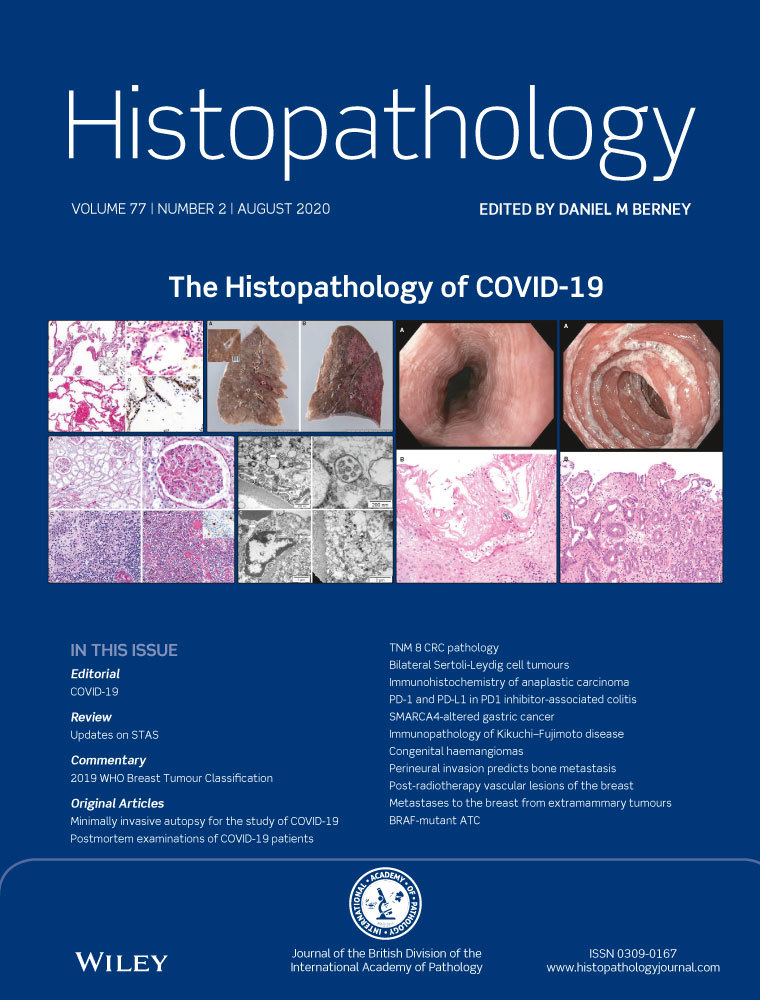The clinicopathological and molecular analysis of gastric cancer with altered SMARCA4 expression
Abstract
Aims
In this study, we examine the clinicopathological and molecular features of gastric cancer (GC) with SMARCA4 alterations.
Methods and results
We screened SMARCA4 alterations using immunohistochemistry on 1199 surgically resected GCs with information on Epstein–Barr virus (EBV), microsatellite instability (MSI) and other SWI/SNF subunits. SMARCA4, SMARCA2 and ARID1A mutations were investigated by targeted sequencing. The clinicopathological significance was determined by statistical analysis. Twenty-seven cases (2%) with altered SMARCA4 expression were identified, exhibiting completely lost (six), reduced (nine) or heterogeneous (12) patterns. Frequent concomitant alterations of other SWI/SNF subunits were noted with an unusual discordant spatial heterogeneity. In comparison with SMARCA4-retained GCs, SMARCA4-lost GCs were observed more frequently in the non-EBV/MSI subgroup (five of six) and reduced or heterogeneous SMARCA4 expression mainly occurred in EBV- or MSI-associated cases (six of nine and six of 12, respectively; P < 0.001). Histologically, SMARCA4-altered GC, irrespective of expression pattern, demonstrated divergent histomorphology, spanning tubular, poorly cohesive or mixed, neuroendocrine to solid and undifferentiated carcinoma, with a predilection to the latter two (P < 0.001). De-differentiation-like transition and rhabdoid features were noted in a minority of cases. For overall survival, altered SMARCA4 expression was an unfavourable prognostic factor in stage III, EBV-associated GC and non-EBV/MSI intestinal subtype (P ≤ 0.001). SMARCA4 or ARID1A mutations were detected mainly in SMARCA4-lost or reduced GC, respectively.
Conclusions
SMARCA4-altered GCs are rare and have intratumoral heterogeneity, histomorphological diversity, conditional prognostic significance and various genetic drivers. SMARCA4-lost GC may represent a genuine SMARCA4-deficient neoplasm, but most SMARCA4-reduced/heterogeneous cases are secondary to ARID1A collapse or associated with different genotypes.
Conflicts of interest
The authors declare no conflicts of interest.




